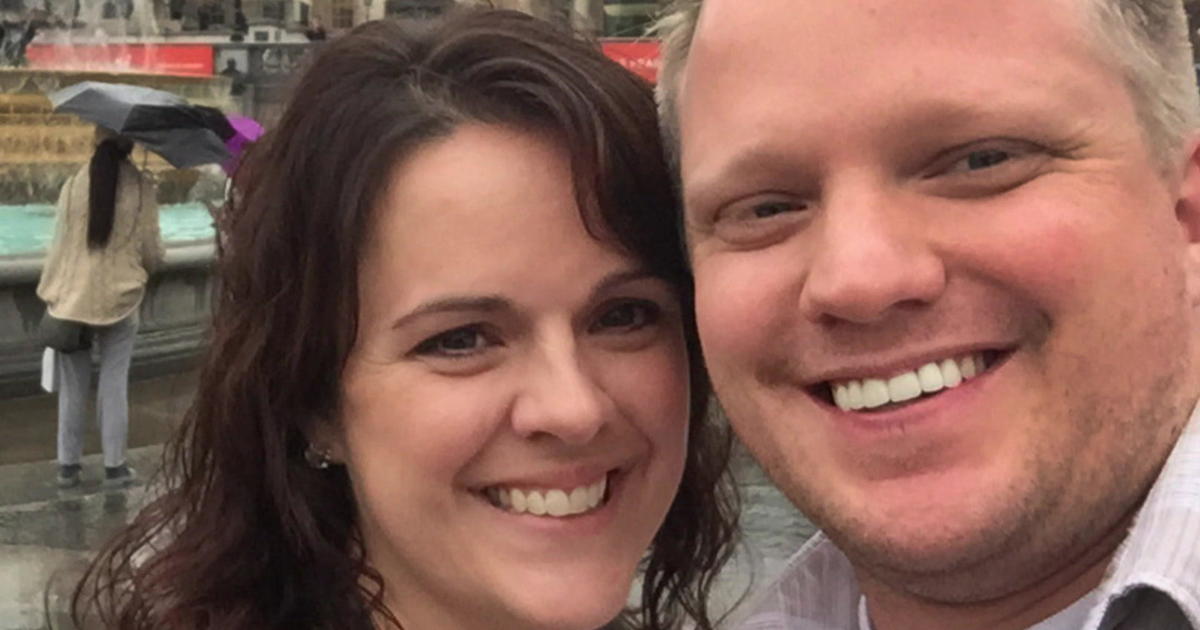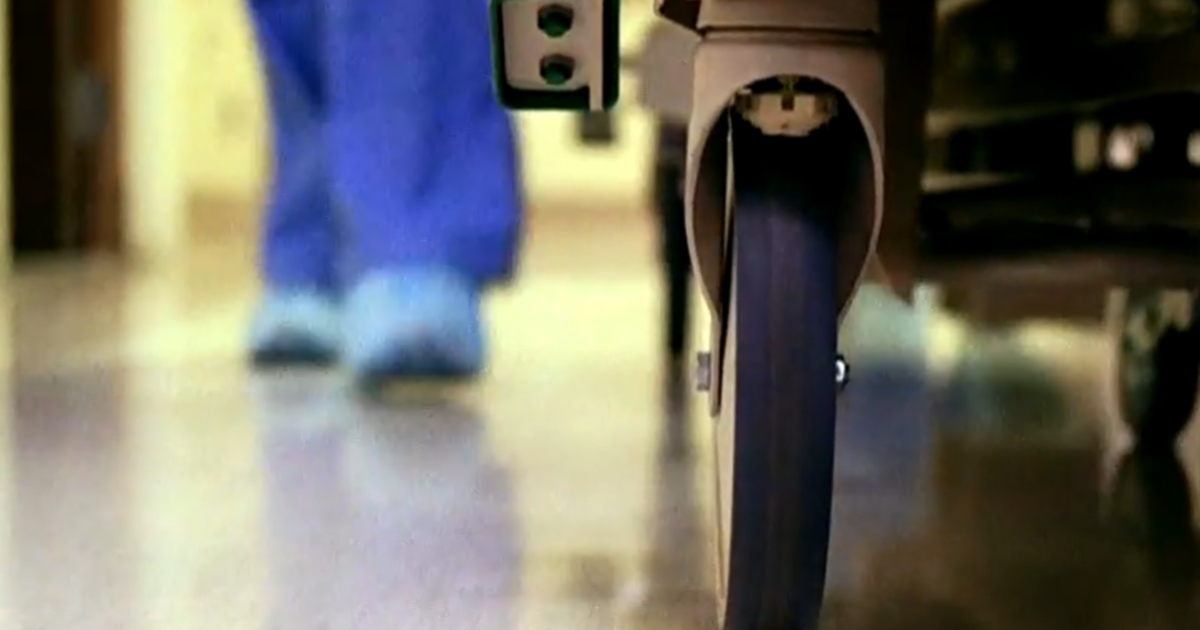25 years after Columbine, school lockdown drills are common. Students say they cause anxiety and fear — and want to see change.
Serenity Seigel was 7 years old when she started worrying about a mass shooting at her school.
Her fears were sparked by the 2012 Sandy Hook shooting, which left 20 children and six adults dead. As she grew up, she continued to see gun violence in the news, and in 2018, the Valentine's Day mass shooting in Parkland, Florida left her anxious and worried about violence in her own North Indiana community.
In her freshman year of high school, she and her fellow students were shown a video simulation that showed their classmates playing dead while a police officer in a ski mask prowled the halls. Immediately following the screening, Seigel and her classmates practiced a lockdown procedure, hiding in the dark while a school official rattled doorknobs.
"Seeing a video that felt so real and seeing a gunman in the hallways of a school that I walk around every single day and people that I've grown up going to school with laying on the ground acting as if they're dead was way too realistic for my anxious brain to be able to handle," Seigel, now 19, told CBS News.
When the lights came back on, Seigel expected that she and her classmates would be able to talk about what they had just gone through — but instead, she said, class resumed as normal, and her third-period Spanish class began taking a test that she said she did terribly on because she was so rattled by the drill.
Students across the United States have experienced fear and anxiety like Seigel's, especially as lockdown drills have become common in the 25 years since the Columbine High School massacre, which left 12 students, one teacher and the two perpetrators dead. At the time, it was the deadliest school shooting in U.S. history, and remains one of the most high-profile mass shootings. The trauma of the day was immortalized in live reports that were widely broadcast on local and national news, and the police response to the shooting led to the development of new policies to handle such incidents.
Before the Columbine shooting, schools practiced drills for fires and natural disasters. After the 1999 massacre, states enacted lockdown and active shooter drills, according to a report from the Federal School Safety Commission. As of 2024, about 95% of public schools in the U.S. practiced active shooter or lockdown drills in the 2015-2016 academic year, according to Everytown for Gun Safety, with more than 40 states requiring such drills. Research suggests that the drills can impact students' mental health negatively, and there have been calls for change that could make the drills less upsetting.
How drills can affect students' mental health
There's no shortage of research showing that teens in the United States are stressed, according to Dr. Christine Crawford, a psychiatrist at Boston Medical Center and the associate medical director for the National Alliance on Mental Illness. Not all of that stress and anxiety can be attributed to lockdown drills and fears of school shootings, Crawford said, but they don't help.
"Kids are able to access information about things that are happening around the world more so now than ever, ever before," said Crawford. "There is this constant concern that something is going to happen right in their backyard, because data suggests that's a possibility. (Between) using social media, watching the news, and hearing their caregivers talk, they're just constantly surrounded and inundated with messages that the world is unsafe, and that it's full of uncertainty."
Lockdown drills can trigger the amygdala, the part of the brain that processes emotions including fear, Crawford said. This can make it less likely that students will actually learn from a lockdown drill.
"They're going to experience trauma from this event, because it's activating all these stress responses in their brain and in their body," she said. "When it keeps happening, the same response is going to happen as well. They're going to keep freezing, they're going to keep fleeing. They're not actually going to be able to take the steps that I imagine school administrators are hoping students would take."
Students are also typically expected to perform these drills and then go on with their school days as if nothing has happened, clinical psychiatrist and Duke University professor Robin Gurwitch, even though they may deal with the fear and stressors Crawford outlined. It's something high school senior Jordyne Lewis has experienced since she and her classmates were placed in soft lockdown for five hours in 2022 after someone reported a credible threat to the school.
"I'm a little bit more heightened to it. When I hear about a drill, it does bring back those memories and make me think about the chance that I may be hurt," said Lewis, who serves on the National Youth Advisory Board for Sandy Hook Promise. "I do have that new fear in place, because I've been through it before."
There are ways schools could help protect students' mental health while still conducting what Lewis referred to as the "necessary evil" of lockdown drills, Crawford and Gurwitch said. Both recommended that schools make sure students and their parents know when a drill is scheduled so that they can be prepared for it. Allowing students time to decompress after the drill is also helpful, Gurwitch said.
"(Turning stress) on and off that fast is unrealistic for adults, and it's definitely unrealistic for kids," said Gurwitch, who is also a senior adviser at the National Center for Child Traumatic Stress. "There needs to be something after these drills, at least a little bit of 'What was that like for you? Let's practice some breathing to calm our bodies and resume our day.' There needs to be a recognition that students did well. For some students, that activation (of stress) may last a little longer and we can help if we see that students are continuing to struggle."
Why drills can differ so widely
A major problem with lockdown and active shooter drills is that there's no standardized practice for them, experts said.
Most often, the drills focus on teaching students where to hide in case of an emergency. Some schools might hold simulated drills, like the ones Siegel experienced. Recently, an elementary school in California made headlines when its principal reportedly pretended to shoot at students and teachers, according to Los Angeles station KTLA. Gurwitch said there is "zero reason ever" for drills like this, and said that they can be even more upsetting for students and teachers who have already experienced traumatic events.
Some legislation to standardize active shooter or lockdown drills has been put forward. A bill recently introduced in California would require that schools give advance warning of drills and ban the use of fake gunfire. Indiana recently enacted a law based on model legislation from Sandy Hook Promise meant to ensure that drills are "conducted in ways that limit trauma," according to a news release from the organization.
What experts say could make drills easier on students
Some schools are working to conduct drills that don't upset students but still teach them what they need to know. Abby Clements, an elementary school teacher in Newtown, Connecticut, said that since the Sandy Hook shooting, her school has focused on making sure lockdown and active shooter drills are "done through a trauma-informed lens." That includes only doing one such drill a year, and making sure that students know they're not in any danger. When students practice their evacuation route, Clements said teachers focus on making it "like a stroll" and ensuring that students know they know where they should go without making it seem "scary."
"It's crazy what we're doing. And you know, I'm not saying get rid of (lockdown drills). That's not what anybody is saying. Instead, let's do it in a trauma-informed way," said Clements, who had huddled with her students at Sandy Hook Elementary as the massacre unfolded. "If you're imparting trauma by doing something to prevent trauma … then what are we doing?"
It's not just changing up the methodology of lockdown and active shooter drills. In some schools, the entire classroom atmosphere is being shifted to focus more on mental health and wellness. Gurwitch helped develop a program to teach adults a trauma-informed set of skills that they can use to "form positive, supportive and trusting relationships" with students.
Michelle Estrada, a teacher in a Florida elementary school, told CBS News that her school started using Gurwitch's CARE in the Classroom program at the start of the 2023-2024 school year. The use of the program has made it easier for kids to talk about their stressors - including lockdown drills. In her school, lockdown drills are immediately followed by fire drills, so the students are dealing with "back-to-back trauma," Estrada explained. Now, students and teachers will return to the classroom and "debrief" from the drills, Estrada said, giving students a chance to talk about their experience and thoughts.
"They're able to have open conversations and not feel like they can't ask questions or express how they're feeling about what just happened," Estrada said.
"It makes it easier to have those tougher conversations."
Editor's note: This story has been updated to correct a reference to Los Angeles TV station KTLA.




